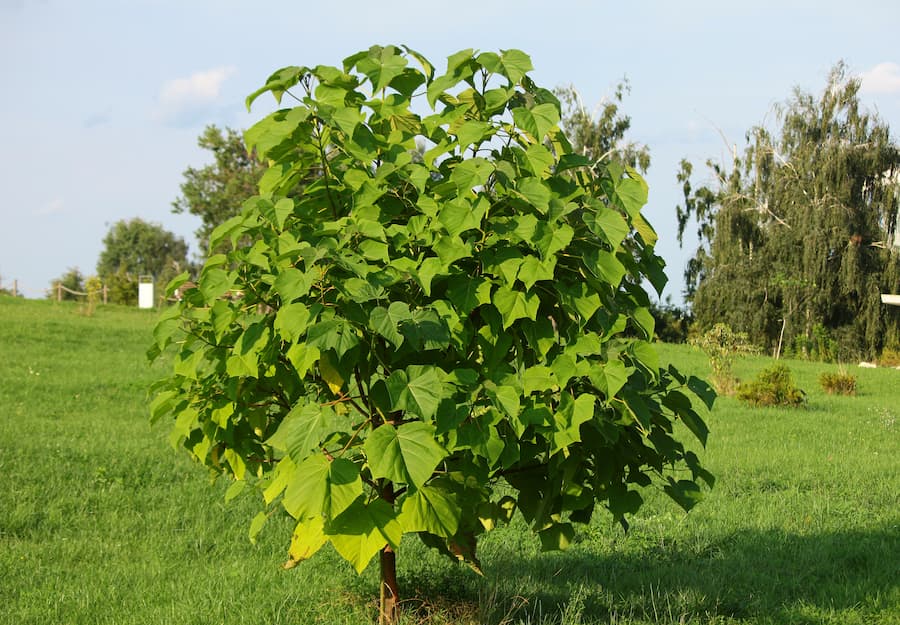This Article Includes the Top 10 Fastest Growing Trees:
- Introduction
- Royal Empress Tree
- Hybrid Popular
- Weeping Willow
- Dawn Redwood
- Silver Maple
- Leyland Cypress
- Quaking Aspen
- Paper Birch
- Red Maple
- Tulip Tree
- Conclusion
Introduction:
In the world of trees, some species stand out for their remarkable growth rates, rapidly transforming landscapes and providing numerous benefits. This article explores the top 10 fastest growing trees, highlighting their unique characteristics, environmental advantages, and potential applications in various industries.
Royal Empress Tree (Paulownia tomentosa):
The Royal Empress Tree is renowned for its astonishing growth rate, capable of reaching heights of up to 15 feet in a single year. Its large, heart-shaped leaves and beautiful purple flowers make it an attractive addition to any landscape.
This tree’s rapid growth and ability to thrive in various soil conditions make it a popular choice for reforestation projects and timber production.
Hybrid Poplar (Populus deltoides x Populus nigra):
The Hybrid Poplar is a crossbreed between the Eastern Cottonwood and the Black Poplar, resulting in a tree with exceptional growth potential. With an average growth rate of 5 to 8 feet per year, this tree is often used for windbreaks, erosion control, and as a source of biomass for bioenergy production.
Weeping Willow (Salix babylonica):
The Weeping Willow is not only known for its graceful appearance but also for its rapid growth. With its long, cascading branches and slender leaves, this tree can grow up to 8 feet per year.
Its ability to tolerate wet soil conditions makes it an ideal choice for planting near water bodies to prevent erosion and provide shade.
Dawn Redwood (Metasequoia glyptostroboides):
The Dawn Redwood is a living fossil, once thought to be extinct until its rediscovery in the 1940s. This deciduous conifer boasts an impressive growth rate of 3 to 5 feet per year.
Its unique feathery foliage and beautiful autumn colors make it a popular ornamental tree, while its fast growth rate contributes to reforestation efforts and carbon sequestration.
Silver Maple (Acer saccharinum):
The Silver Maple is known for its rapid growth and adaptability to various soil conditions. With an average growth rate of 2 to 3 feet per year, this tree quickly establishes itself in landscapes, providing shade and beauty.
Its silver-gray bark and vibrant fall foliage add to its appeal, making it a favorite choice for homeowners and urban planners.
Leyland Cypress (Cuprocyparis leylandii):
The Leyland Cypress is a hybrid tree resulting from the crossbreeding of Monterey Cypress and Alaskan Cedar. This evergreen conifer is prized for its fast growth rate of 3 to 4 feet per year, making it an excellent choice for privacy screens, windbreaks, and noise barriers. Its dense foliage and ability to withstand various soil conditions contribute to its popularity.
Quaking Aspen (Populus tremuloides):
The Quaking Aspen is a deciduous tree known for its rapid growth and unique trembling leaves. It can grow up to 2 to 3 feet per year, forming extensive clonal colonies through its interconnected root system.
This tree plays a vital role in reforestation efforts, as it quickly colonizes disturbed areas and provides habitat for various wildlife species.
Paper Birch (Betula papyrifera):
The Paper Birch, also known as the White Birch, is a fast-growing tree native to North America. With an average growth rate of 2 to 3 feet per year, it quickly establishes itself in landscapes, providing shade and ornamental value.
Its distinctive white bark and golden fall foliage make it a popular choice for landscaping and timber production.
Red Maple (Acer rubrum):
The Red Maple is a fast-growing tree native to North America, known for its adaptability and vibrant fall colors. With a growth rate of 1 to 2 feet per year, it quickly matures into a medium sized tree, providing shade and beauty to landscapes.
Its red flowers in spring and red foliage in autumn make it a favorite choice for homeowners and urban environments.
Tulip Tree (Liriodendron tulipifera):
The Tulip Tree, also known as the Yellow Poplar, is a fast-growing hardwood tree native to North America. With an average growth rate of 1 to 2 feet per year, it can reach impressive heights.
Its tulip-shaped flowers and unique leaf shape make it a visually striking addition to any landscape. The Tulip Tree’s rapid growth and valuable timber make it a valuable resource for the woodworking industry.
Conclusion:
The top 10 fastest growing trees showcased in this article demonstrate nature’s ability to thrive and adapt. From the Royal Empress Tree’s rapid growth to the Tulip Tree’s impressive height, these trees offer a range of benefits, including erosion control, carbon sequestration, timber production, and aesthetic appeal.
By harnessing the potential of these fast-growing trees, we can contribute to reforestation efforts, sustainable practices, and the preservation of our natural environment.

